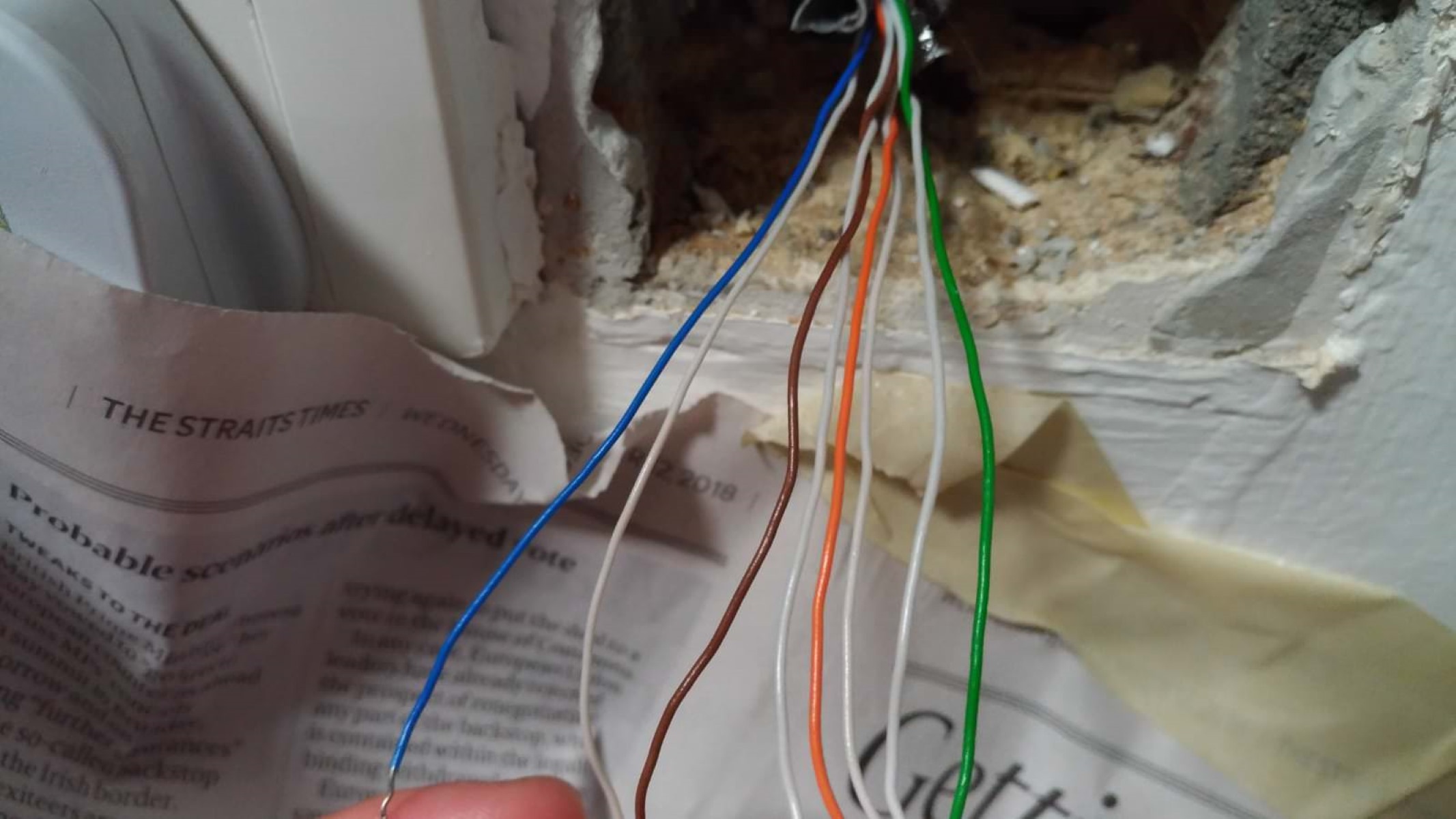In this guide, we will walk you through the steps involved in running Ethernet cable through a wall.
Well also cover the installation of anEthernet jackto ensure a proper and secure connection.
Having everything prepared will save you time and prevent interruptions during the installation process.

Consider the following factors when determining the best path for your cable:
1.
Accessibility: Identify the starting and ending points for the Ethernet connection.
Determine the most direct and accessible route between the two points.
Keep in mind any obstacles, such as furniture or fixtures, that may hinder cable installation.
Wall Construction: Familiarize yourself with the construction of the walls to understand the potential challenges you may encounter.
Check for wall studs, electrical wiring, and plumbing connections that may affect the pathway for the cable.
Take note of any existing wall outlets or Ethernet jacks that can be utilized.
Interference: Avoid routing the cable alongside electrical wires or other sources of interference.
Running Ethernet cables parallel to power cables can cause signal degradation.
If you must cross paths with electrical wires, do so at a perpendicular angle to minimize interference.
Cable Length: Measure the distance between the starting and ending points to determine the length of cable needed.
Account for extra length to accommodate any bends or turns in the route.
wise to have extra cable on hand to be safe.
Aesthetics: Consider the aesthetic aspect of the installation.
Plan the route that is least obtrusive and visually appealing.
Conceal the cable behind baseboards, crown moldings, or within cable management channels to maintain a neat appearance.
Mark the locations where you will need to make holes for the cable entry and exit points.
It is helpful to use a leveler to ensure straight lines and accuracy in the marking process.
Step 3: Measure and Mark
1.
Measure along the planned route, taking into account any twists, turns, or bends.
Its important to be as accurate as possible to avoid any slack or excess cable.
This point will indicate where you will cut the cable later.
Take into consideration any variations in the paths or connection points for each cable.
This will prevent any confusion or mistakes when it comes time to make the actual cut.
Remember to double-check your measurements before cutting the cable.
Step 4: Cut the Wall Hole
1.
Use a stud finder to check for any wall studs or other obstacles in the area.
Its crucial to avoid cutting into any structural elements or electrical wires.
Ensure that these tools are sharp and in good condition for clean cuts.
Start cutting: Carefully cut along the marked lines, starting at the entry point.
If you are using a drywall saw, use gentle back-and-forth motions to create a clean cut.
Make any necessary adjustments to the hole size, but avoid making it too large.
This will prevent any rough edges from damaging the Ethernet cable during installation.
This will prevent any interference or obstruction when fishing the Ethernet cable through the wall.
Remember to exercise caution and take your time while cutting the wall hole.
Its better to proceed slowly and ensure accuracy rather than rushing and making mistakes.
Step 5: Fish the Cable
1.
This will serve as a guide to help navigate the cable through the wall.
Slowly guide it towards the exit hole, gently pushing or pulling to navigate through any obstacles or bends.
Use caution to avoid kinking or damaging the cable during this process.
Check for a stable internet connection to ensure the cable is properly installed.
Its important to avoid forcing or damaging the cable during this process.
Step 6: Install Ethernet Jack
1.
Prepare the wall plate: Begin by unscrewing the faceplate from the wall plate, if applicable.
This will expose the mounting holes and RJ45 socket.
Insert the Ethernet jack into the mounting holes and use the provided screws to secure it in place.
Ensure that the Ethernet jack is aligned properly and fits snugly into the wall plate.
Ensure that it is securely fastened and level with the surrounding wall.
Test the connection: With the Ethernet jack installed, its important to test the connection for proper functionality.
Connect your devices to the Ethernet jack using Ethernet cables and check for a stable internet connection.
If needed, use a cable tester to verify that all the wires are properly connected and functioning.
Its important to follow the manufacturers instructions and guidelines when installing the Ethernet jack.
With the Ethernet jack securely installed, youre nearly done with the installation process.
The final step is to test the connection and ensure a reliable connection performance.
Step 7: Test the Connection
1.
Ensure that the cables are securely plugged in on both ends.
Browse websites, stream videos, or perform any activities that you normally would online.
Monitor the performance and stability of the connection to ensure a reliable data pipe experience.
Compare the results with your internet service providers advertised speeds to ensure youre getting the expected performance.
If necessary, consult your internet service provider or a professional for further assistance.
when you land confirmed a stable and functioning connection, youve completed the installation process.
Enjoy your fast and secure Ethernet connection and the benefits it brings to your home or office.
Check for any issues and address them promptly to ensure optimal functionality.
The benefits of running Ethernet cable through walls are numerous.
It also enhances the overall aesthetics of your space by eliminating unsightly cables along the floor or walls.
in case you find any challenges or uncertainties during the installation process, dont hesitate to seek professional assistance.
Its important to prioritize safety and compliance with any building codes or regulations in your area.
So go ahead, embark on this DIY project, and enhance your internet experience today.